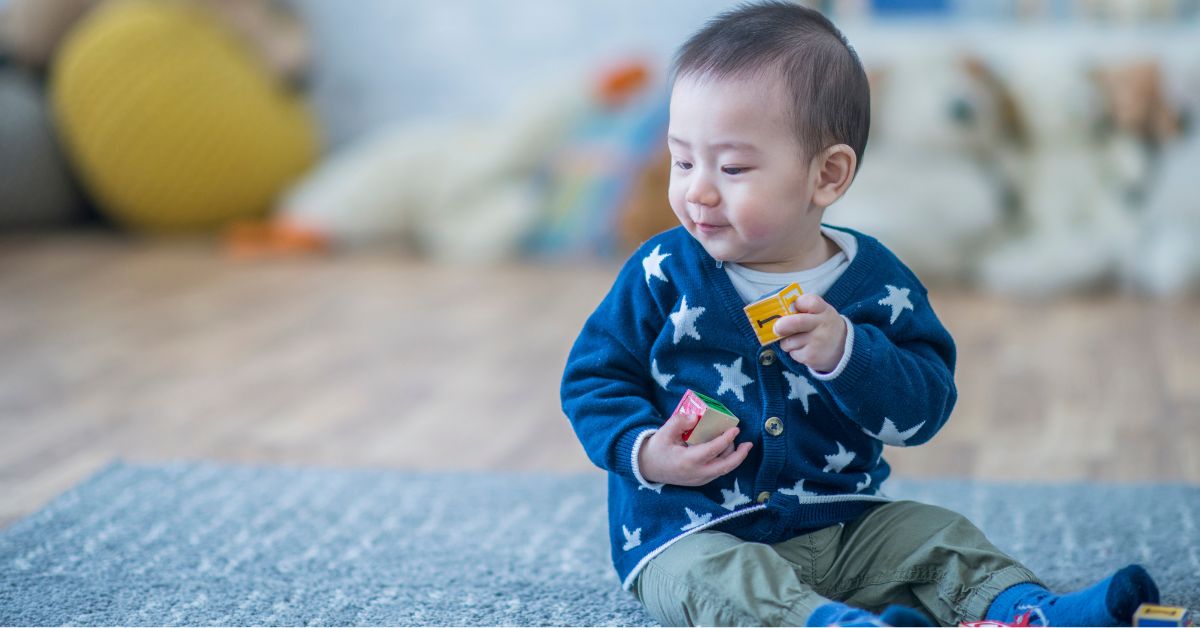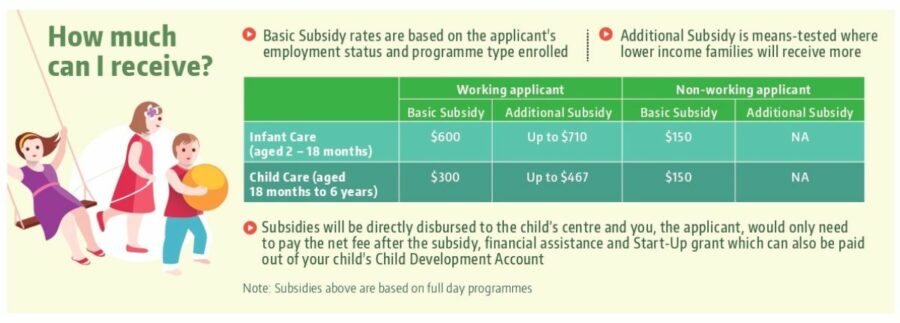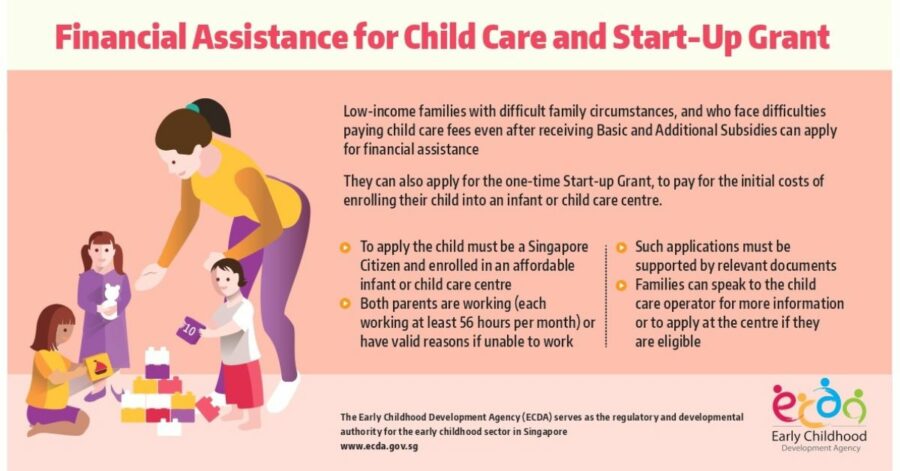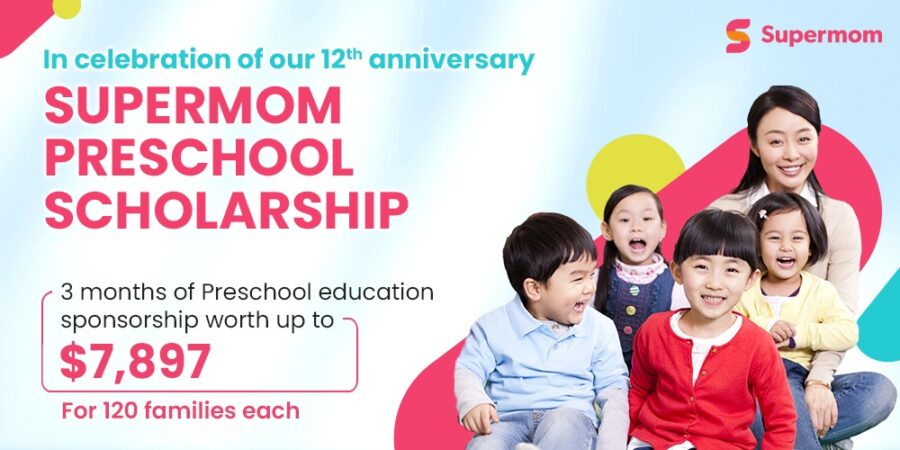Raising kids in Singapore can get pretty expensive, especially when it comes to child care. But don’t worry, the government has your back with some great subsidies to help ease the burden. We’ll break down everything you need to know about the Early Childhood Development Agency’s (ECDA) Child Care and Infant Care Subsidy.
Recently, the Budget 2024 announcements brought some exciting updates that will make child care more affordable for many families. From fee reductions to increased subsidies for lower-income families, there’s a lot to cover. Let’s dive into how these changes can benefit you and your little ones.
Government Initiatives and Budget 2024 Announcements
The latest Budget 2024 announcements have introduced some fantastic changes. From fee reductions to boosted subsidies, here’s a look at what’s new and how it can help your family
Overview of Deputy Prime Minister Lawrence Wong’s Budget 2024 Announcements
Deputy Prime Minister Lawrence Wong recently shared some exciting news in the Budget 2024 speech, focusing on making child care more affordable for Singaporean families. He announced several measures aimed at reducing costs and increasing support for parents, especially those with lower incomes. These changes are set to roll out over the next couple of years, bringing much-needed relief to many households.
The key highlights include reduced fees for government-supported pre-schools and increased subsidies for families with non-working mothers.
Increased Subsidies for Lower-Income Families with Non-Working Mothers
The government is increasing subsidies for lower-income families with non-working mothers. Previously, more subsidies were given to children with working mothers, but this will change to ensure equitable support. Up to 17,000 children will benefit from these enhanced subsidies.
This change means that families with non-working mothers will receive the same level of subsidy as those with working mothers.
Want to give your little one the best start? Join our exciting parenting seminar, ‘Raising Little Learners: A Parent’s Guide to the Early Years,’ on May 17, 2025.
Use code SM50 for 50% off your registration! Secure your spot now and unlock exclusive perks and expert parenting insights!
Details of the Fee Cap Reduction for Full-Day Child Care in 2025 and 2026
The fee cap for full-day child care is set to decrease in two stages. In 2025, the cap will drop by $40 per month, bringing the costs down to $640 for anchor operators and $680 for partner operators. This initial reduction is just the beginning, with further fee decreases planned for 2026.
While the exact details for the 2026 reduction are still pending, the intention is to continue lowering the financial burden on families.
Impact on Dual-Income Families and Comparison to Primary School Expenses
For dual-income families, these changes will bring child care costs more in line with primary school expenses. Currently, sending a child to pre-school can be quite expensive, but with the new fee caps, it will be much more manageable. This alignment helps ensure that families don’t face a significant financial jump when their child transitions from pre-school to primary school.
Types of Child Care and Infant Care Subsidies
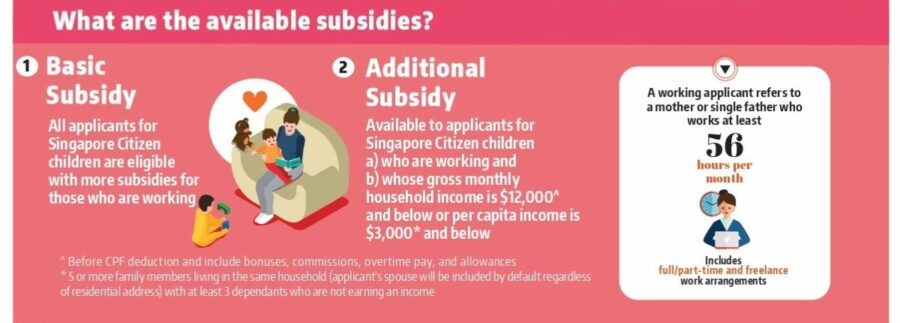
When it comes to child care and infant care in Singapore, there are two main types of subsidies you should know about. Let’s break down how the Basic Subsidy and Additional Subsidy work, so you can see what might be available for your family.
Basic Subsidy
The Basic Subsidy is a straightforward way to help cover child care costs, and it’s available to all Singapore Citizen children enrolled in an ECDA-licensed centre. If you’re a working parent, you can get a subsidy of $600 for infant care (ages 2-18 months) and $300 for child care (ages 18 months to 6 years). This subsidy is directly disbursed to your child’s care centre, so you only need to pay the remaining fee.
For non-working parents, the subsidy amounts are lower, but there is still support available. Non-working mothers can receive $150 for infant care and child care.
Additional Subsidy
The Additional Subsidy is where things get a bit more tailored to your family’s financial situation. It’s means-tested, which means the amount you receive depends on your household income. Working parents with a gross monthly household income of $12,000 and below can get up to an extra $710 for infant care and up to $467 for child care. This subsidy is also paid directly to the child care centre, so you benefit immediately.
If your family has more than five members and a lower per capita income, the subsidy calculation considers that as well.
Eligibility Criteria for Subsidies
Understanding who qualifies for child care and infant care subsidies is crucial for getting the support you need. Here’s a breakdown of the eligibility criteria, so you know exactly what boxes to tick to make the most of these benefits.
Who qualifies for subsidies?
To qualify for child care and infant care subsidies, your child must be a Singapore Citizen enrolled in an ECDA-licensed centre. This means that as long as your little one is a citizen and you choose a ECDA-licensed centre, you’re on the right track.
This applies to both full-day and part-day programmes, giving you flexibility based on your needs.
Criteria for Basic and Additional Subsidies
- Basic Subsidy: Employment Status and Program Type
To get the Basic Subsidy, your employment status plays a big role. If you’re a working parent, you’ll receive a higher subsidy because the government aims to support working families. For infant care (ages 2-18 months), working parents can get up to $600, while for child care (ages 18 months to 6 years), the subsidy is $300.
Non-working parents also get help, but the amounts are lower – $150 for both infant care and child care.
- Additional Subsidy: Means-Tested Based on Household Income
If your gross monthly household income is $12,000 or below, you can qualify for Additional Subsidy. For working parents, this can mean an additional $710 for infant care and up to $467 for child care.
For larger families with five or more members, the per capita income is considered. If it’s $3,000 or below, you’re also eligible for this extra help.
Subsidy Rates and Benefits
Knowing how much you can get from child care and infant care subsidies can really help with budgeting. Read on for a detailed look at the subsidy rates and the benefits you can expect, so you can plan your finances better and make the most of these supports.
Subsidy amounts for working and non-working applicants
- Infant Care (2-18 months)
If you’re a working parent, you can get a Basic Subsidy of $600 for infact care. This helps cover a good chunk of the costs, making it easier to manage your budget. On top of that, there’s the Additional Subsidy which can add up to $710, depending on your household income.
Non-working parents aren’t left out either, though the Basic Subsidy is lower at $150. However, they won’t qualify for Additional Subsidy.
- Child Care (18 months to 6 years)
When it comes to child care for kids aged 18 months to 6 years, working parents can receive a Basic Subsidy of $300. Additionally, the means-tested Additional Subsidy can offer up to $467 more.
For non-working parents, the Basic Subsidy is again $150, though they will still not qualify for Additional Subsidy.
How subsidies are disbursed directly to child care centres
Subsidies for child care and infant care are directly disbursed to the centres where your child is enrolled. This means you don’t have to deal with the hassle of reimbursements or waiting for payments. Once your application is approved, the subsidy amount is automatically deducted from your monthly fees, leaving you with just the net amount to pay.
This system is designed to be seamless and hassle-free. You’ll receive notifications about the subsidy application and its approval status, so you’re always in the loop. By handling the subsidies this way, the process is straightforward and ensures that the financial support reaches where it’s needed most – directly reducing your child care costs.
If you’re not working due to certain circumstances, you might still qualify for higher subsidy support. This includes situations like actively looking for a job, being enrolled in a course, pregnancy, or dealing with medical issues that prevent you from working.
Additionally, if you’re caring for a sick or special needs family member, or a younger child under 24 months, you can apply for Special Approval.
Non-parent caregivers, such as grandparents, legal guardians, foster parents, or those in children’s homes, can also apply for this higher subsidy support. The process is designed to help ensure that children in non-traditional caregiving situations receive the same quality of care and education as their peers.
Meanwhile, families living under HDB’s Public Rental Scheme or receiving ComCare assistance automatically qualify for the maximum preschool subsidies. This automatic qualification is part of a broader effort to support low-income families facing financial difficulties.
Application Process for Subsidies
Filling out the Subsidy Application Form is your first step towards getting financial help for child care. The form will ask for basic details about you, your child, and your household income. Make sure to gather all necessary documents, like proof of income and employment status, before you start.
Once you’ve completed the form, submit it to your child’s care centre. They’ll help you ensure everything is in order and then forward it to the Early Childhood Development Agency (ECDA). It’s a good idea to keep a copy of the form and all submitted documents for your records.
After your application is submitted, ECDA will review it and notify you of the outcome. You’ll receive an SMS and an email with the details of your subsidy approval. This notification will tell you how much subsidy you’ve been granted and when it will start.
Keep an eye on your messages, and once approved, you’ll see the subsidy reflected in reduced fees at your child’s care centre.
Re-assessment and Notification of Subsidy Eligibility

Your subsidy eligibility isn’t set in stone and can change over time. Here’s what you need to know about when and how your subsidy status might be reassessed and how you’ll be notified.
Enrolling in a New Centre
Whenever you enroll your child in a new child care centre, your subsidy eligibility will be reassessed. This is to ensure that all the details are up-to-date and that you’re getting the correct subsidy amount based on the new centre’s fees and your current circumstances. Make sure to notify the new centre and provide any required documents to facilitate the reassessment process.
Progressing from Infant Care to Child Care
When your child moves from infant care to child care, it’s time for another reassessment. The needs and costs associated with these different stages of care can vary, so your subsidy will be adjusted accordingly. The centre will help you with this process, ensuring that the transition is seamless and that your subsidy reflects the new care arrangement.
Promoting from Nursery 2 to Kindergarten 1
Promotion from Nursery 2 (N2) to Kindergarten 1 (K1) is another key point when your subsidy eligibility is reviewed. As your child advances in their early education, the reassessment ensures that the subsidy amount aligns with the new program’s requirements and costs.
Additional Financial Assistance
Even with the basic and additional subsidies, some families may still find it hard to cover the full cost of child care. For those in such situations, there’s additional financial assistance available.
Starting at a new child care centre can also come with significant initial costs, which can be a burden for low-income families. To help with this, there’s a one-time Start-Up Grant available. This grant covers things like registration fees, uniforms, and other initial expenses. If you think you qualify, be sure to ask your child care provider about this grant and how to apply.
Are You Eligible for ECDA Child Care and Infant Care Subsidy?
Child care and infant care subsidies play a crucial role in supporting families and ensuring that every child has access to quality early childhood education. These subsidies help ease the financial burden, making it possible for more children to benefit from structured learning environments. By investing in early education, we’re not only helping our children today but also building a stronger, more educated society for the future.
If you think you might be eligible for these subsidies, don’t hesitate to apply. The process is straightforward, and the benefits can make a big difference in your family’s finances. Take advantage of the available support to give your child the best possible start in life. Your child’s early years are too important to let financial worries stand in the way.
Sign Up for our Preschool Scholarship today!
Supermom is celebrating its 12th anniversary this year and continues to pursue its mission of empowering millions of families to live better and smarter.
We are sponsoring 120 families who are active Supermom members with 3 months free preschool fees (worth up to S$7,897) to send their child to some of Singapore’s top preschools – MindChamps Preschool, MindChamps Chinese Preschool, and MMI Preschool.
Slots are limited and allocated based on a first-come-first-served basis for qualified members so, hurry, submit the form now!
